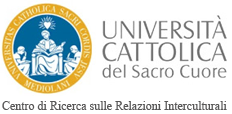|
The Romani communities in Italy whose members hold Italian citizenship include:
- Long-settled Roma people: These number approximately 50,000 and live mostly in houses, in Central and Southern Italy. They often work as traders in second-hand cars and horse meat (in the past, horses). Some are street vendors, owners and/or managers of stores, cafés and restaurants. Others are manual labourers, athletes (in particular boxers and football players), professional nurses, municipal employees, insurance brokers, craftsmen, artists, small scale entrepreneurs and teachers.
- Long-settled Sinti: These people number approximately 50,000 and they mainly live in the Centre and North of Italy. The majority are employed in circuses (e.g. the famous Orfei and Togni families of circus artists) or as merry-go-round operators; they live in luxurious camper vans and caravans. Many of them, like the Italian Roma people, also engage in other professions, but are sometimes also acrobats and puppeteers. Some live in houses, but many live in nomad camps out of expediency or because of their family history.
Non-Italian Romani communities in Italy mainly comprise Roma people who have recently emigrated, and they include:
- Roma from former Yugoslavia: approximately 30,000 people who have arrived in Italy in waves since the 1960s. Many of them came in the 1990s following the Balkan wars and ethnic cleansing. Most of them live in nomad camps. Very few have taken out Italian nationality, and a large number no longer even have a country of origin, which makes them 'de facto stateless', a status, however, which is not recognized by the Italian authorities.
- Romanian Roma people of very recent immigration, who arrived in Italy both before and after Romania's entry into the European Union. They number approximately 40,000 and live in nomad camps and in shanty towns. Under the Ceausescu regime they were forced to give up their nomadic lifestyle and, as was the case in many other East European countries, they were integrated into the educational and labour system of socialist Romania. However, with the collapse of socialism and the difficult transition to democracy, Romania's Roma population again fell victim to the deeply ingrained social stigma in Romanian society, which was reawakened after remaining dormant for decades.
|




